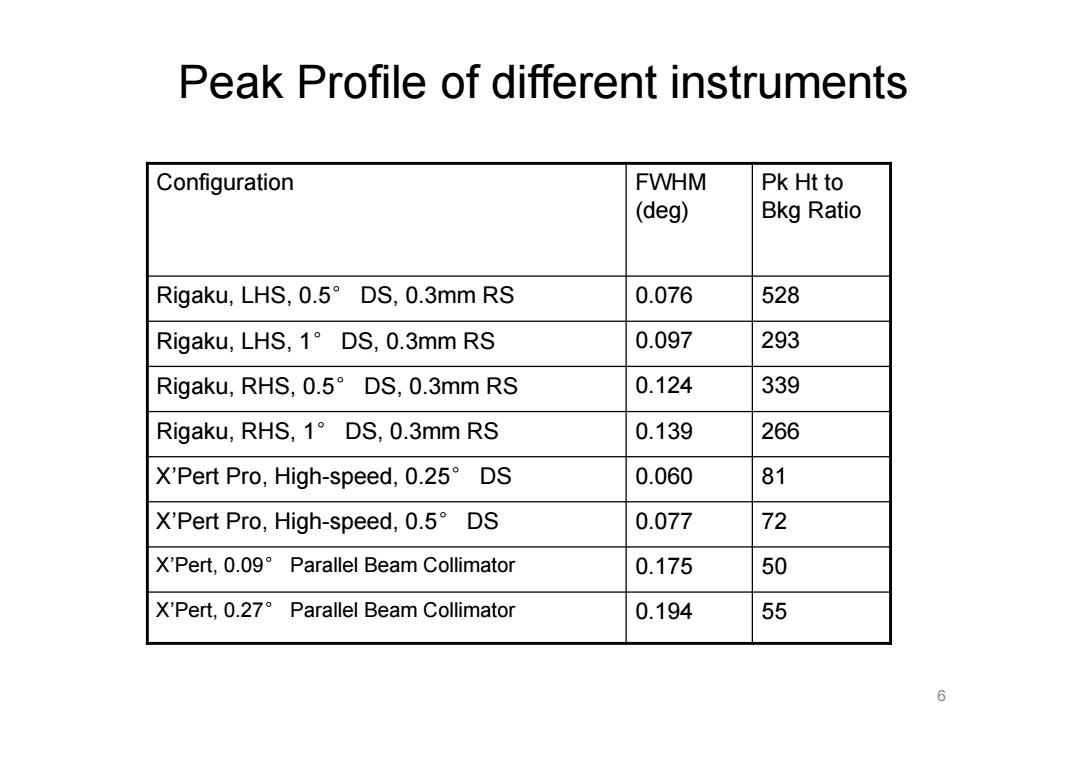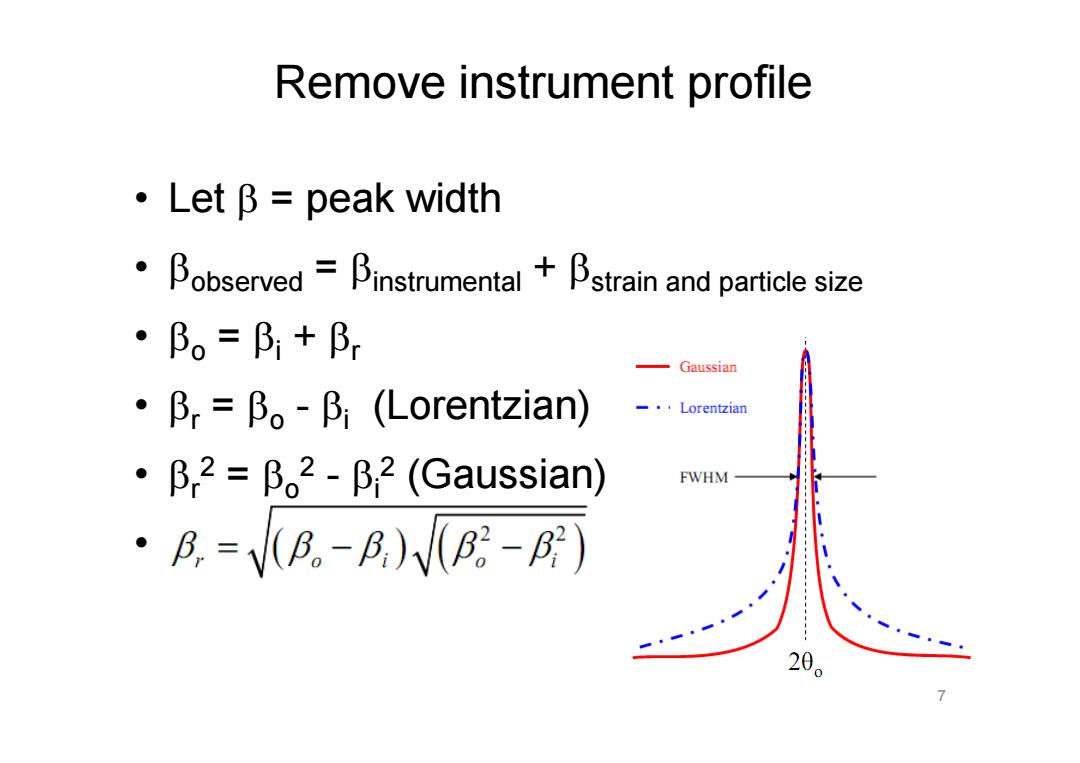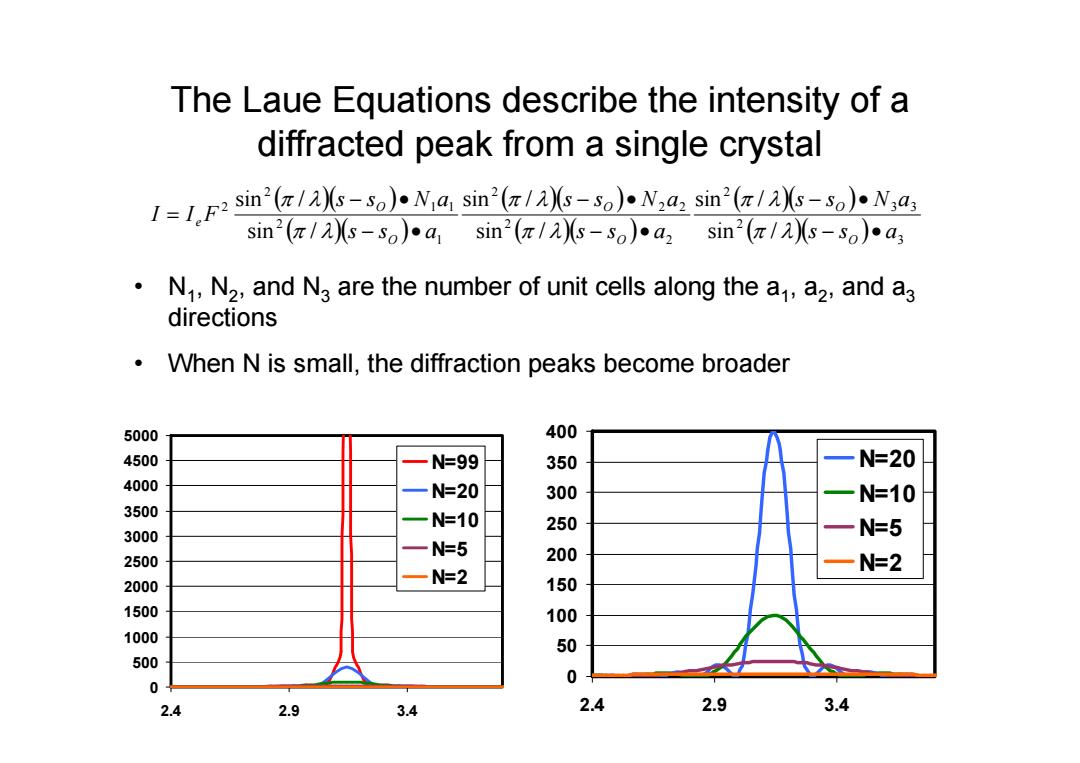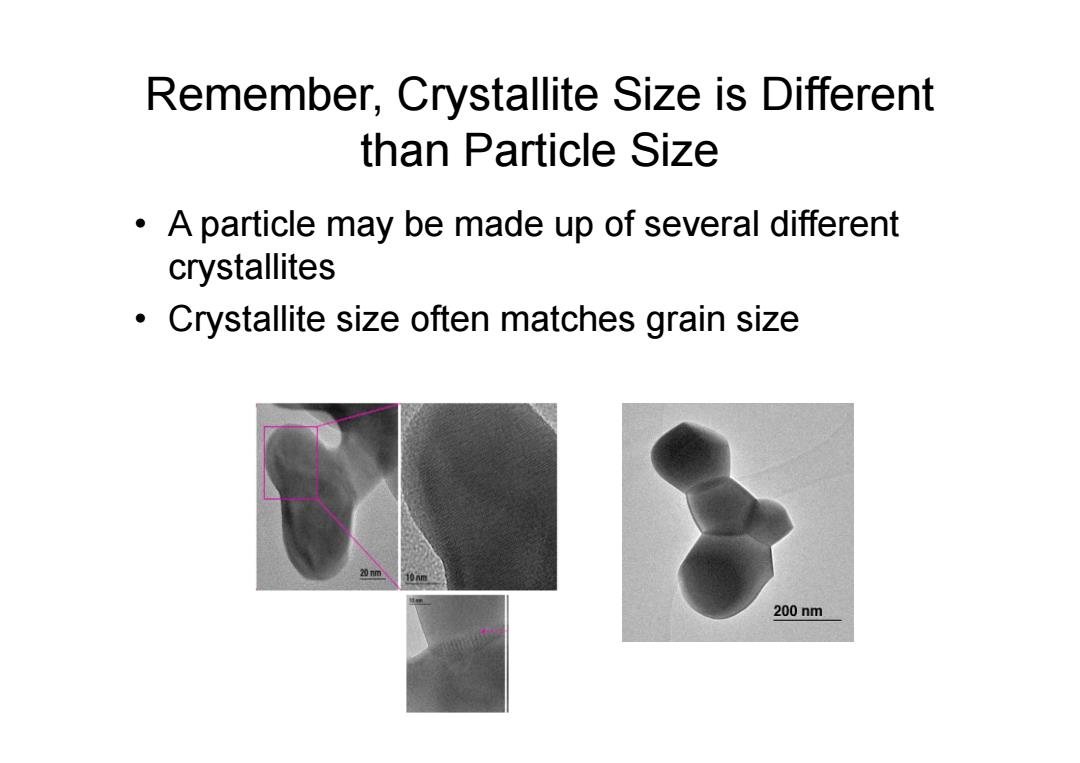
Peak Profile of different instruments Configuration FWHM Pk Ht to (deg) Bkg Ratio Rigaku,LHS,0.5 DS,0.3mm RS 0.076 528 Rigaku,LHS,1 DS,0.3mm RS 0.097 293 Rigaku,RHS,0.5DS,0.3mm RS 0.124 339 Rigaku,RHS,1 DS,0.3mm RS 0.139 266 X'Pert Pro,High-speed,0.25 DS 0.060 81 X'Pert Pro,High-speed,0.5 DS 0.077 72 X'Pert,0.09 Parallel Beam Collimator 0.175 50 X'Pert,0.27 Parallel Beam Collimator 0.194 55 6
6 Configuration FWHM (deg) Pk Ht to Bkg Ratio Rigaku, LHS, 0.5° DS, 0.3mm RS 0.076 528 Rigaku, LHS, 1° DS, 0.3mm RS 0.097 293 Rigaku, RHS, 0.5° DS, 0.3mm RS 0.124 339 Rigaku, RHS, 1° DS, 0.3mm RS 0.139 266 X’Pert Pro, High-speed, 0.25° DS 0.060 81 X’Pert Pro, High-speed, 0.5° DS 0.077 72 X’Pert, 0.09° Parallel Beam Collimator 0.175 50 X’Pert, 0.27° Parallel Beam Collimator 0.194 55 Peak Profile of different instruments

Remove instrument profile ·LetB=peak width Bobserved-Binstrumental +Bstrain and particle size ·Bo=B+Br Gaussian ·Pr=β。-β,(Lorentzian) Lorentzian ·β,2=β。2-β,2(Gaussian) FWHM ·A.=VB。-R)VB-B) 20
• Let = peak width • observed = instrumental + strain and particle size • o = i + r • r = o - i (Lorentzian) • r2 = o2 - i2 (Gaussian) • 7 Remove instrument profile

Crystallite Size Broadening K九 B(20)= - 0.94元 B(28)= Lcose L cos 0 The Scherrer Equation(1918) Peak Width due to crystallite size varies inversely with crystallite size L (or D) as the crystallite size gets smaller,the peak gets broader The peak width varies with 0 The crystallite size broadening is most pronounced at large 20
Crystallite Size Broadening • Peak Width due to crystallite size varies inversely with crystallite size L (or D) – as the crystallite size gets smaller, the peak gets broader • The peak width varies with – The crystallite size broadening is most pronounced at large 2 cos 2 L K B The Scherrer Equation (1918) cos 0.94 2 L B

The Laue Equations describe the intensity of a diffracted peak from a single crystal 11sin(-so)Na sin(/s-s0)Nadz sin'(/As-so).N,a, sin2(π/)s-so)a1sin2(π/2-so)•a2sin2(π/2)s-so)a3 o N,,N2,and Na are the number of unit cells along the a,a2,and a3 directions When N is small,the diffraction peaks become broader 5000 400 4500 N=99 350 N=20 4000 N=20 300 N=10 3500 N=10 250 3000 N=5 N=5 2500 200 一N=2 N=2 2000 150 1500 100 1000 500 0 0 2.4 2.9 3.4 2.4 2.9 3.4
The Laue Equations describe the intensity of a diffracted peak from a single crystal • N1, N 2, and N 3 are the number of unit cells along the a1, a 2, and a 3 directions • When N is small, the diffraction peaks become broader 3 2 3 3 2 2 2 2 2 2 1 2 1 1 2 2 sin / sin / sin / sin / sin / sin / s s a s s N a s s a s s N a s s a s s N a I I F O O O O O O e 0 500 1000 1500 2000 2500 3000 3500 4000 4500 5000 2.4 2.9 3.4 N=99 N=20 N=10 N=5 N=2 0 50 100 150 200 250 300 350 400 2.4 2.9 3.4 N=20 N=10 N=5 N=2

Remember,Crystallite Size is Different than Particle Size A particle may be made up of several different crystallites Crystallite size often matches grain size 200nm
Remember, Crystallite Size is Different than Particle Size • A particle may be made up of several different crystallites • Crystallite size often matches grain size